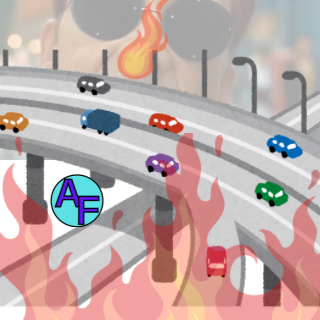You are approximately 20 times more likely to die in a car than on the subway

Urban public transit—buses and trains—is often perceived as dangerous. But what about cars and parking lots? Less than one percent of all violent crimes occur on public transit, compared to 7.3% in parking lots.
Highways in the United States have long been synonymous with mayhem. From serial killers to stranger rapists, highways and automobiles have provided a more effective escape route than public transit or bicycles.
From the 2014 book “Killer on the Road” by Ginger Strand:
Starting in the 1950s, Americans eagerly built the planet’s largest public work: the 42,795-mile National System of Interstate and Defense Highways. Before the concrete was dry on the new roads, however, a specter began haunting them—the highway killer. He went by many names: the “Hitcher,” the “Freeway Killer,” the “Killer on the Road,” the “I-5 Strangler,” and the “Beltway Sniper.”
In the 1960s and 1970s, the U.S. murder rate surged as criminals exploited the anonymity and quick getaways enabled by cars and the interstate highway system.
A 2024 study by Roberts et al. revealed that between 2010 and 2019, authorities traced 526,801 guns used in crimes to interstate purchases. The “Iron Pipeline,” a term for the flow of firearms along major transportation routes like Interstate 95 (I-95), highlights this phenomenon. Guns from states with lax gun laws, such as Pennsylvania and Georgia, are frequently linked to crimes in states with stricter regulations, like New York and New Jersey. Similar trends occur elsewhere, with firearms traveling from southern states to Illinois or from western states into California.
New York City, home to the nation’s best public transit, is also one of its safest cities. Meanwhile, in rural areas where public transit is sparse or nonexistent, the likelihood of being shot in public is significantly higher.
Rural roads have also become increasingly deadly. According to “America’s Rural Roads: Beautiful and Deadly,” 85,002 people died on rural roads between 2016 and 2020—more than the population of Scranton, Pa., or the capacity of Lambeau Field. In 2020, the risk of a fatal crash on rural roads was 62 percent higher than on urban roads for trips of the same length.
Propaganda, not data, often shapes perceptions of safety—and these perceptions are frequently rooted in racism. As a woman, I feel far safer on New York City subway than on a road in rural Jackson County, Iowa. But feelings shouldn’t override facts when it comes to funding priorities or editorial media narratives.





